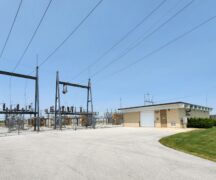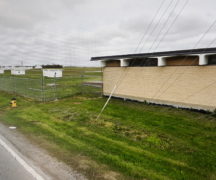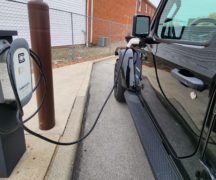By JAN LARSON McLAUGHLIN
BG Independent News
On a day when the mercury didn’t even hit 20 degrees Fahrenheit, it may seem bizarre to bring up peak demands on the city’s electric services in the summer.
But Bowling Green’s Board of Public Utilities recently voted to adopt a “smart thermostat” resolution, which will now go to City Council for consideration.
“This is a way our customers can enroll in peak shaving programs,” Bowling Green Utilities Director Brian O’Connell said.
The “peak shaving” program will help by automatically reducing energy consumption during high demand hours on very hot days. During peak electric demands – up to 15 times a year – the city can control the thermostats at participating homes and businesses.
“We try not to affect their comfort level,” O’Connell said, explaining that the smart thermostats turn down the temperature a couple degrees to pre-cool the home or business prior to the predicted peak time.
So when the peak time hits – and many city customers have high energy demands, the air conditioners of the program participants will not be running. But because the homes were pre-cooled, they should remain comfortable, O’Connell said.
American Municipal Power will predict the peak shaving times a day in advance, he said. Then the city works with AMP to send a signal out to smart thermometer companies, which then send signals to those signed up for the program.
“The thermostat talks to the homeowner’s wifi,” O’Connell said.
The customers will be notified that the city will adjust their thermostats for a maximum of four hours. The program has the potential to connect water heaters, electric vehicles, pool pumps and more, but will be focusing initially on smart thermostats.
Residents or businesses have the ability to override their smart thermometers – in case they have a reason to want the air conditioning to continue over those hours.
In Bowling Green, peak shaving is only necessary in the summers – on very hot days when the air conditioning demands are so high. The city does not experience such peaks in the winter, since so many customers use natural gas for heat.
“The summertime is when we see the peaks occur,” O’Connell said.
Jim Odneal, assistant utilities director, explained that coincident peak charges have grown to represent as much as 25% of the city’s energy supply costs.
These peaks are associated with transmission and capacity. The transmission charge is based on the previous year’s single highest coincident peak, while the capacity charge is an average of the previous year’s five highest coincident peaks, according to Odneal.
To reduce these costs, peak shaving can be accomplished primarily by one of two ways – increasing behind the meter power generation and reducing energy consumption during potential peak events.
According to Odneal, the city has already established several behind the meter generation resources. This program will reduce energy consumption by automatically reducing retail customer load through the management of connected technologies.
Customers who currently have a connected smart thermostat can sign up and receive a $55 one-time gift card incentive payment. Additionally, through Efficiency Smart, a customer who does not have a smart thermostat can receive up to a $100 rebate on the purchase of one that would allow them to participate in this program.
It is estimated, after all utility costs for the program, that the city would save $14 per thermostat annually on coincident peak charges.





